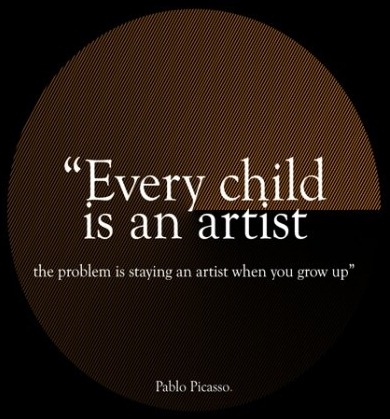-
Home / Integrity and Art
Was this valuable to you?
other links and editorials from Clarisse88
I assume we have all wondered about the meaning of integrity at one point or another in our lives. This idea has always been in my mind, and that's why I've decided to write a little essay about it.
Integrity may be defined as a strong adherence to a set of values, determined by the individual. So, we can say that it is a human quality. It is a capacity that can be developed voluntarily by all human beings. As such, integrity requires the existence of certain ideals to direct our behavior. Voluntary choice is the only possibility to earn or lose integrity.
We can develop integrity in many different ways, but being honest with ourselves is key. Without truth, we don't recognize the proper facts of reality that are used to establish our own set of values. If our values are based on something other than reality, our behaviors will be wrong. Furthermore, and by definition, a lie is contradictory to the meaning of integrity.
When an individual acts with integrity, his actions adhere to his values or principles. So when our values determine our behavior, we can say that our actions have integrity. This means that integrity is implicit in the process of our actions and is shown in their results. An action can result in many different things. For example, an action can create an object. But given that integrity is a human quality, an object cannot have integrity if it is not the result of a human's action. For example, a stone can't have integrity because it hasn't any kind of connection with a human being. However, a human creation (e.g., a piece of art, which is a human representation of reality) has integrity when it represents the author's values. Its integrity is to follow its own truth, and to serve its own purpose. Certainly, there is not a common, universal purpose to all pieces of art, but art has integrity when its purpose adheres to the author's values. These values determine the art's own truth.
There are two fundamental aspects to discern integrity in a piece of art: the technical aspect and the conceptual aspect. An author's focus varies depending on his/her value criterion. For example, I can value a certain technique (e.g., literary, pictorially) based upon my personal style in an artistic representation. So my artwork would have integrity to my aesthetic or technical criterion. On the other hand, I can value certain ideas which determine the meaning of my piece of art. This means that my artwork has integrity to my point of view about a specific issue. Both perspectives constitute the purpose of my artwork. However, a piece of art may or may not have integrity, depending on its adhesion to the author's values.

Soft Construction with Boiled Beans (Premonition of Civil War) located at the Philadelphia Museum of Art
For instance, the Spanish artist Salvador Dali may be considered an author adhering to his set of values while developing his artwork. Technically, he developed a personal style of painting and created his paranoiac-critical method. Both his style and this method have integrity to his representative point-of-view about reality. Also, if we analyze the meaning of his paintings, we will see a strong adherence to his ideals regarding the world. For example, his painting "Soft construction with boiled beans (Civil War premonition)", finished in 1936, represents his ideals about the civil war from a critical perspective. There are different parts of the same body hurting each other; it's Dali's report concerning the atrocities of such an event. The beans are offerings that attenuate evil spirits. The purpose of this painting is clearly a critique of the war ideals. Its own truth resides on the strong adherence to his values about life, his point of view of this event, and his personal style of representation.
Lastly, I think that integrity is not linked to what people think about an individual's ideals, but is the direct connection between the person and his adherence to his values while realizing an action. So, in an artistic ambit, integrity is not determined by the viewer's opinion or preferences, but by the author's adhesion to his own values. In fact, the first time that I looked at Dali's painting, I had a hard time understanding its meaning or purpose. However, this doesn't mean that his piece of art is without integrity to his values. It is now clear to me that he used a personal code that represents his ideals about this event.
 This work, excluding any content linked via another source/website, is licensed under a Creative Commons Attribution 4.0 United States License. Permission to reprint in whole or in part is gladly granted, provided full credit is given and references the URL: http:/
This work, excluding any content linked via another source/website, is licensed under a Creative Commons Attribution 4.0 United States License. Permission to reprint in whole or in part is gladly granted, provided full credit is given and references the URL: http:/About art
 arthttps://valme.io/c/artc_prompt
arthttps://valme.io/c/artc_promptThis is a community of art lovers that share their favorite pieces, news or information that will impact the art community.

